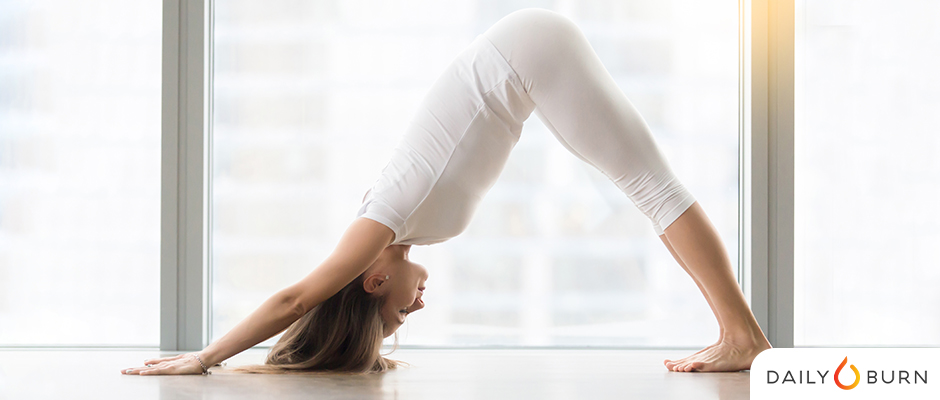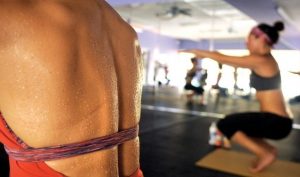
The Yoga Sutras are 196 Sanskrit sutras that Patajali has collected. The texts were written in Sanskrit by Patanjali (a Sage who synthesised wisdom from the older traditions of Yoga) and were assembled in the early century CE. These sutras were originally a work in progress. They are now one of the most important resources for practicing yoga worldwide.
The Yoga Sutras are comprised of four chapters. The first chapter is dedicated to enlightenment, while the four following chapters are about the journey to that goal. 52 sutras describe the benefits of meditation, yoga, and pilates (niyama). The 54/55 sutras detail Ashtanga and Karma yoga. The benefits of regular meditation are explained in the last two sutras.
Patanjali’s Yoga Sutras are regarded as the foundational text and basis of yoga. They are composed of 196 short verses. Although they date back to 400 B.C. scholars believe Patanjali wasn't the original creator of yoga but rather an excellent expounder of it. The sutras are divided into five levels, or padas.
The eighth limb is samadhi. This state of pure contemplation is the ultimate goal of yoga, and it is the most important one. According to the Sutras, Nirbija–samadhi (also known as seedless contemplation) is when the body and spirit are completely separated. This means that the mind can be freed from any ego and matter.

Yoga is a spiritual endeavor, and the Yoga Sutras provide the basis for this practice. Its practice involves observing the principles of nature. The three nature qualities are sattva (rajasa), tamasva (tamasva). The first and most important quality of nature is sattva, yama. It is also the hardest to attain. Although it is difficult to grasp the purpose of the three others, ahimsa is the most important of all the four.
The Yama and Niyama sections are the three parts of the first book of Yoga Sutras. The first is a biography that includes a description of Patanjali. This biography is about the famed yogi. The second book contains the yoga sutras, which are the most important. The books also have information about the history, practice, and development of yoga. Besides the historical background of the text, the sutras also contain a detailed discussion of the origins of the practice.
In the original text, the Sutras of Patanjali are divided into four distinct sections: the Mahabhashya, the Pranayama, and the Bhashya. The book's third chapter, the Mahabhashya is a crucial chapter. It covers the theory and practice, as well as the various stages of awakening. The fourth chapter deals with Panini's defense.
The Yoga Sutras form the heart of Patanjali’s second book. Although the Sanskrit language words are used, the Sanskrit word "sutra" means "thread". The Sutras are a part of Hindu Scripture. It is the core of yoga. Its origin dates from 250 BCE up to the first century of the first million years CE.
Yoga Sutras are complex, dense, and complicated in terms both of language and content. Due to their difficulty, a comment on the Yoga sutras would be highly recommended. However, it is not an integral part of Yoga sutras. While there are some differences in the translations of Yoga Sutras, the text is the main part of the book. Some versions use the term “asana” to refer to a single pose, while others may use different versions.

The Yoga Philosophy Sutras of Patanjali are considered one the most important yogic texts. The Sutras can be helpful for anyone who wants to learn ancient techniques or practice yoga in a modern setting. These Sutras are relevant to modern yoga. The Yoga Sutras are yours to follow. Learning the Yoga Philosophy of Patanjali has many benefits.
In a wide variety of sacred texts, Patanjali shares his insight. His writings describe the eight limbs and five types of yogi body, as well as the five qualities of a good yogi's brain. These Sutras offer a wealth of inspiration to modern yogis and should be read. This book will teach you the fundamental principles of Yoga.
FAQ
Which is the best order to exercise?
It all depends upon what you are trying to achieve. If you want to build muscle mass, then do heavy weights first. Then you can move to cardio. If you are looking to lose weight, then move on to strength training.
You can burn fat by just doing cardio. You can then add strength training.
You should do cardio last if your goal is to increase muscle mass. This stimulates growthhormones, which helps build muscle mass.
You should also eat before your workout. This will fuel your muscles and make them work harder. It will also make you feel more energetic during your workouts.
Is Cardio Better Than Strength Training?
Both are equally beneficial. If you want to increase muscle mass faster, cardio is the better option.
Cardio burns more calories per minute than strength training and burns more fat.
Strength training increases muscle mass but takes more time than cardio.
How can I lose weight by avoiding certain foods?
Avoid trans fats. Trans fats can increase LDL (the negative) cholesterol levels and decrease HDL (the positive) cholesterol.
Trans fats can also be found in deep-fried food, fast food, packaged bakery goods, snack cakes, as well as other processed foods.
These unhealthy fats also cause inflammation, leading to heart disease and diabetes.
Avoid eating foods that contain artificial sweeteners. Artificial sweeteners have been linked to an increase in cancer risk.
These chemicals can be found in soft drinks, chewing gum, and candy bars. They appear in many other foods, including meat, poultry, fish, and eggs.
Artificial sweeteners include saccharin and sorbitol.
The American Heart Association recommends avoiding these chemicals because they may damage DNA in cells.
Can I consume alcohol while working out?
Yes. Alcohol can increase energy expenditure and speed up recovery, as well as reduce soreness.
Also, alcohol increases insulin sensitivity which makes it easier to absorb glucose.
However, alcohol can cause dehydration, which can slow down your metabolism. You may also experience a reduction in testosterone production which can lead to decreased muscle-building potential.
Women shouldn't consume alcohol before exercising. Women who drink heavily should wait at least 24 hours between drinking and working out.
Women who are nursing should avoid alcohol as much as possible.
Men should limit their alcohol intake to just one drink each day.
Statistics
- Are You One of the 20% of Guys (mh.co.za)
- 10 pounds in a month is likely during a lean bulking phase, especially for beginners. (muscleandstrength.com)
- An estimated calorie range for moderately active adult males falls between 2,200 to 2,800 calories per day, depending on age. (eatright.org)
- Candidates and applicants must pass all four tests at 70% (minimum level) to graduate from Basic Deputy U.S. Marshal (BDUSM) Training. (usmarshals.gov)
- The PRS enabled risk stratification for overall prostate cancer and lethal disease with a four-fold difference between men in the highest and lowest quartiles (HR, 4.32; 95% confidence interval [CI], 3.16-5.89). (pubmed.ncbi.nlm.nih.gov)
External Links
How To
How can I burn fat and exercise?
Exercise burns calories by increasing metabolism and oxygen consumption.
At moderate intensity, you will lose weight easily.
These are the top tips for burning fat while you exercise.
-
Cardio exercises like walking, running (or jogging), swimming, cycling, running, and/or elliptical training are all good options.
-
Three times per week, exercise for 30 minutes.
-
Add strength training to your workouts if you are looking to lose more weight.
-
Avoid intense workouts. It is possible to build muscle without destroying muscle tissue.
-
Keep hydrated during exercise. Water is essential for flushing out toxins and keeping your body hydrated.
-
Choose low-fat protein shakes after working out. Protein shakes boost energy and repair muscle tissue.
-
Eat smaller meals throughout the day, so you don't feel hungry between meals.
-
Don't skip breakfast! Skipping breakfast can cause you to feel tired and sluggish.
-
Take care of your mind. Stressful situations may slow down your metabolism.
-
Keep a positive attitude. Studies have shown that people who are convinced they are overweight gain more weight than those who feel they look attractive.
-
Get enough rest. A lack of sleep makes it difficult to lose fat.
-
Stay active. Make sure you get up and move every hour.
-
Maintain a healthy diet. Eat right to feel satisfied and full for longer.
-
Find ways to relax. A tense mind doesn't allow your body to release stress hormones that break down muscle tissue.
A balanced diet will provide all nutrients that are necessary for growth.
Eat six small meals each day instead of three large ones. This gives your body the time it needs to process what you've eat.
To maintain strong bones, you need to consume 500 mg of calcium each day. Calcium can be found in dairy products such as yogurt, fortified soybean beverages, orange juice, cereals, bread, and cereals.
Calcium is found in green leafy vegetables, beans, tofu, seeds, nuts, and cheese.
Vitamin D is essential for calcium absorption. It's found in fatty fish, egg yolk, and some fortified foods.
Vitamin E is essential for skin health. Vitamin E can be found in vegetable oils as well as wheat germ oil, peanuts and almonds.
Your body requires zinc to function normally and for wound healing. Zinc can be found as a mineral in oysters.
Zinc deficiency could cause fatigue, nausea, vomiting, and depression.
Sugar intake can lead to insulin resistance which causes blood glucose levels to rise. Insulin resistance is linked to weight gain.
Insulin resistance occurs when the bloodstream is full of free radicals. Free radicals are molecules that have unpaired electrons, which can cause damage to cell membranes or other parts of your body.
The main sources of free radicals are food additives.
Free radicals can lead to cancer and heart disease, diabetes mellitus, arthritis, asthma, and premature aging.
A well-balanced diet rich in antioxidants is the best way for you to avoid free radical damage. Antioxidants protect against oxidative damage.
Vitamin C can be found in citrus fruits. Beta carotene can be found in carrots. Sweet potatoes. Tomatoes. Carrots. Sweet potatoes. Spinach. Broccoli. Cantaloupe. Vitamin E is found in nuts. Olive oil, avocados.
Selenium, copper as well as manganese and zinc are some other antioxidant nutrients.
Selenium helps protect cells from oxidative damage caused by free radicals. Selenium can also be found in Brazil nuts (tuna), liver, kidneys and shrimp.
Copper protects your eyes, brain, eyes and red blood cell. Copper is found in shellfish, poultry, meat, and organ meats.
Manganese is an essential component of bone structure. Manganese may be found in brown rice or spinach, bananas and prunes as well raisins, oatmeal and lentils.
Zinc is necessary for average growth, reproduction, and wound healing. Zn is found in lean meats, poultry, white fish and eggs.